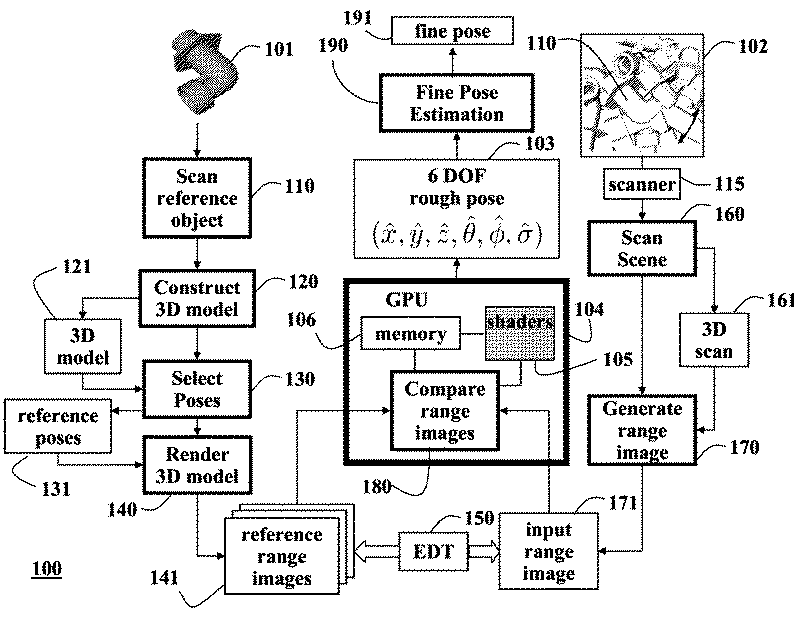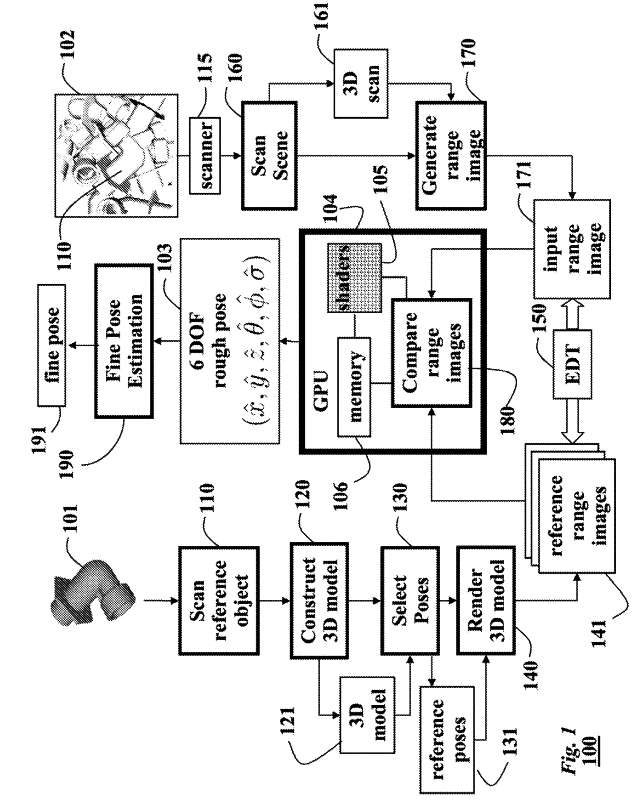Method and System for Determining Poses of Objects from Range Images Using Adaptive Sampling of Pose Spaces
a range image and adaptive sampling technology, applied in the field of computer vision, can solve the problem that most methods need manual initialization, and achieve the effect of reducing the error function
- Summary
- Abstract
- Description
- Claims
- Application Information
AI Technical Summary
Benefits of technology
Problems solved by technology
Method used
Image
Examples
Embodiment Construction
[0050]Method and System Overview
[0051]FIG. 1 shows a method and system 100 for determining a pose of an object 110 according to embodiments of our invention. The method uses range images 171, reference images 141, and a 3D model 121 of the object.
[0052]The method is performed, in part, on a graphics processing unit (GPU) 104. The massive data-parallel processing on the GPU makes our method much simpler and more efficient than more complex general purpose computer based methods. Our method is fully automatic and does not require an initial estimate of the pose. Even though we compare several thousand reference images, the pose determination can be performed in real-time.
[0053]The pose can be used by other applications, for example, a robotic application that mechanically manipulates the object.
[0054]Preprocessing
[0055]During pre-processing, a reference object 101 is scanned 110 in detail to construct 120 a 3D model 121 of the reference object. The reference object 101 is identical to...
PUM
 Login to View More
Login to View More Abstract
Description
Claims
Application Information
 Login to View More
Login to View More - R&D
- Intellectual Property
- Life Sciences
- Materials
- Tech Scout
- Unparalleled Data Quality
- Higher Quality Content
- 60% Fewer Hallucinations
Browse by: Latest US Patents, China's latest patents, Technical Efficacy Thesaurus, Application Domain, Technology Topic, Popular Technical Reports.
© 2025 PatSnap. All rights reserved.Legal|Privacy policy|Modern Slavery Act Transparency Statement|Sitemap|About US| Contact US: help@patsnap.com



